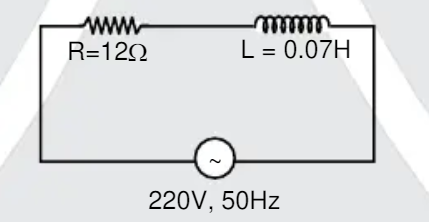An alternating e.m.f is applied to a circuit containing L and C in parallel . The phase difference between the branch current IL and IC is :
A
0∘
B
90∘
C
270∘
D
180∘
Text Solution
The correct Answer is:D
|
Updated on:21/07/2023
Knowledge Check
- Question 1 - Select One
The phase difference between voltage and current in series L-C circuit is
A0∘BπCπ2Dπ3 - Question 1 - Select One
In an AC circuit XC=XL. The phase differe3nce between the current and voltage will be
A0BπCπ/2Dπ/4 - Question 1 - Select One
An alternating potential E=E0sinωt is applied to a series L-C circuit. What is the phase difference between the voltage across L and C?
Aπ2BπC3π2Dzero - Question 1 - Select One
An alternating e.m.f. is applied to a circuit containing an inductance and a capacitance in series. It is found that for a particular frequency 'f' of the A.C. Genrator, the current in the circuit is maximum. If L=12π Henry and c=12πμF, then the reasonant frequency is
A100 HzB1000 HzC500 HzD50 Hz - Question 1 - Select One
An alternating e.m.f. E=10√2sinω volt is applied to a circuit containing a pure inductance L and a resistance and voltage acros the resistance is 6 v between the current and potential difference in this circuit is
A10 VB8 VC6 VD12 V - Question 1 - Select One
An alternating e.m.f. is applied to purely capacitive circuit. The phase relation between e.m.f. and current flowing in the circuit is or in a circuit containing capacitance only
Ae.m.f. is ahead of current by π/2BCurrent ahead of e.m.f by π/2CCurrent lags behind e.m.f. by πDCurrent is ahead of e.m.f. by π - Question 1 - Select One
If an alternating e.m.f. is applied to a series L-R circuit, the phase angle between e.m.f. and current is given by tanθ=ωLR. Hence the power factor of the series L-R circuit is
A1. ωLRB2. RωLC3. RR+ωLD4.R√R2+ω2L2


